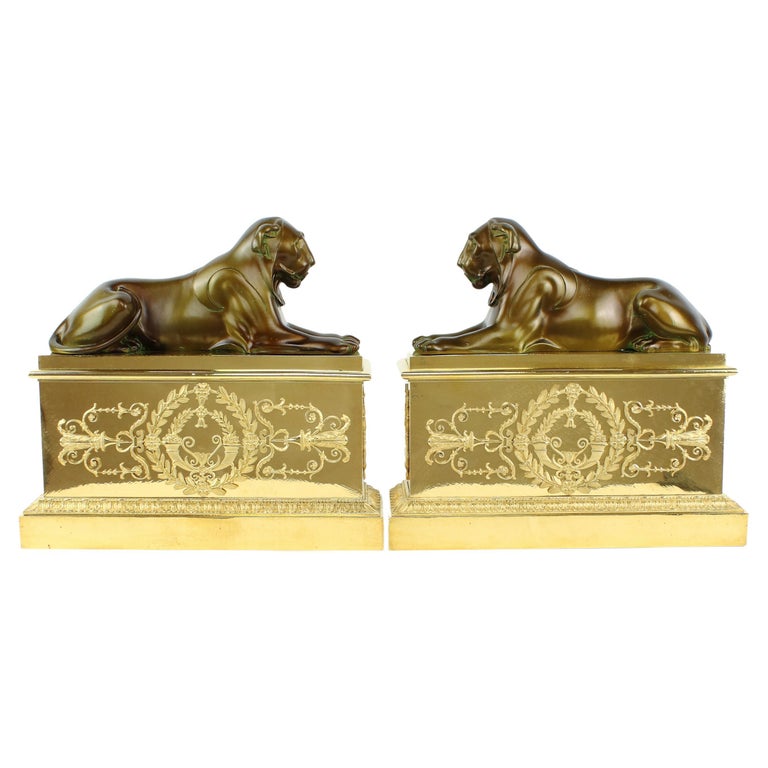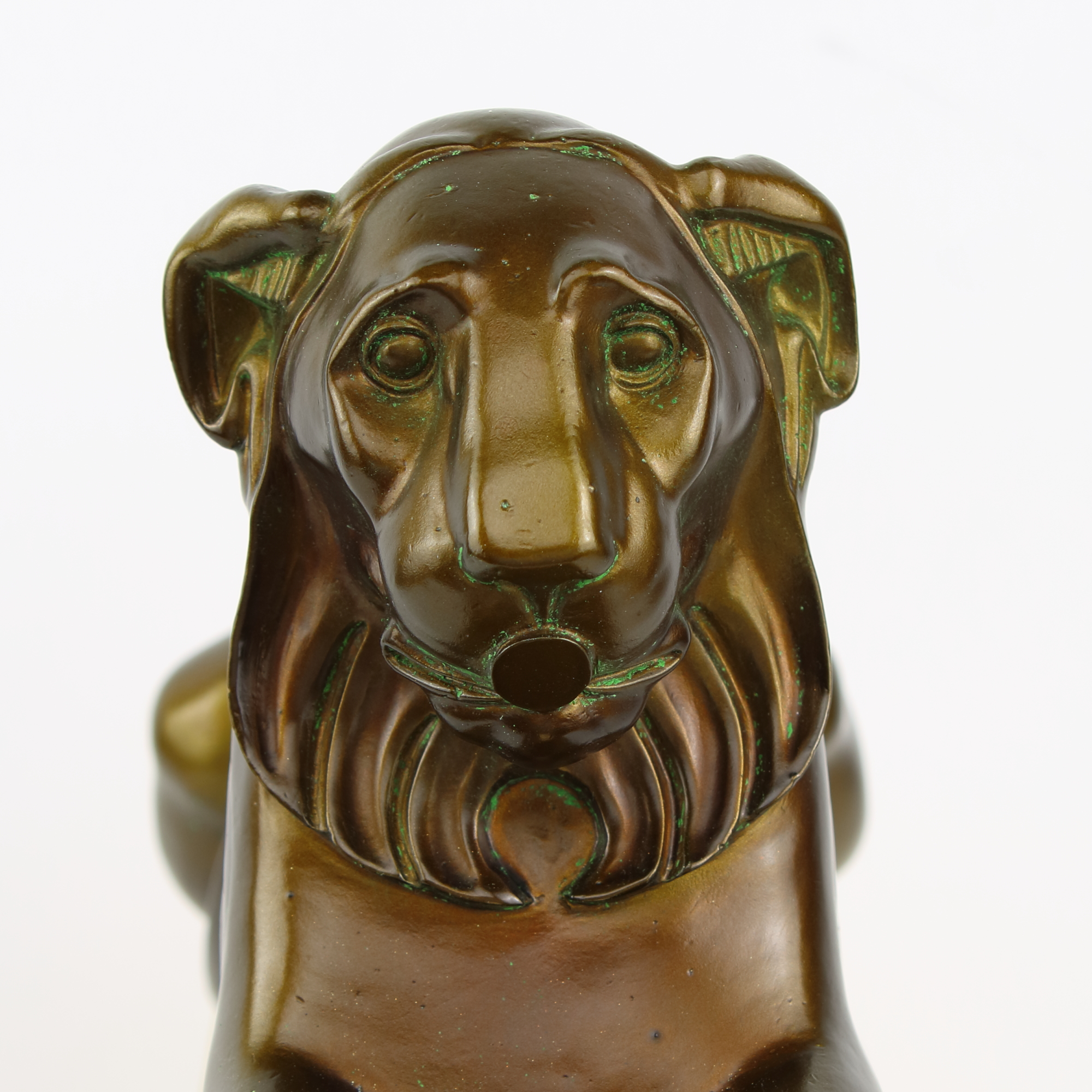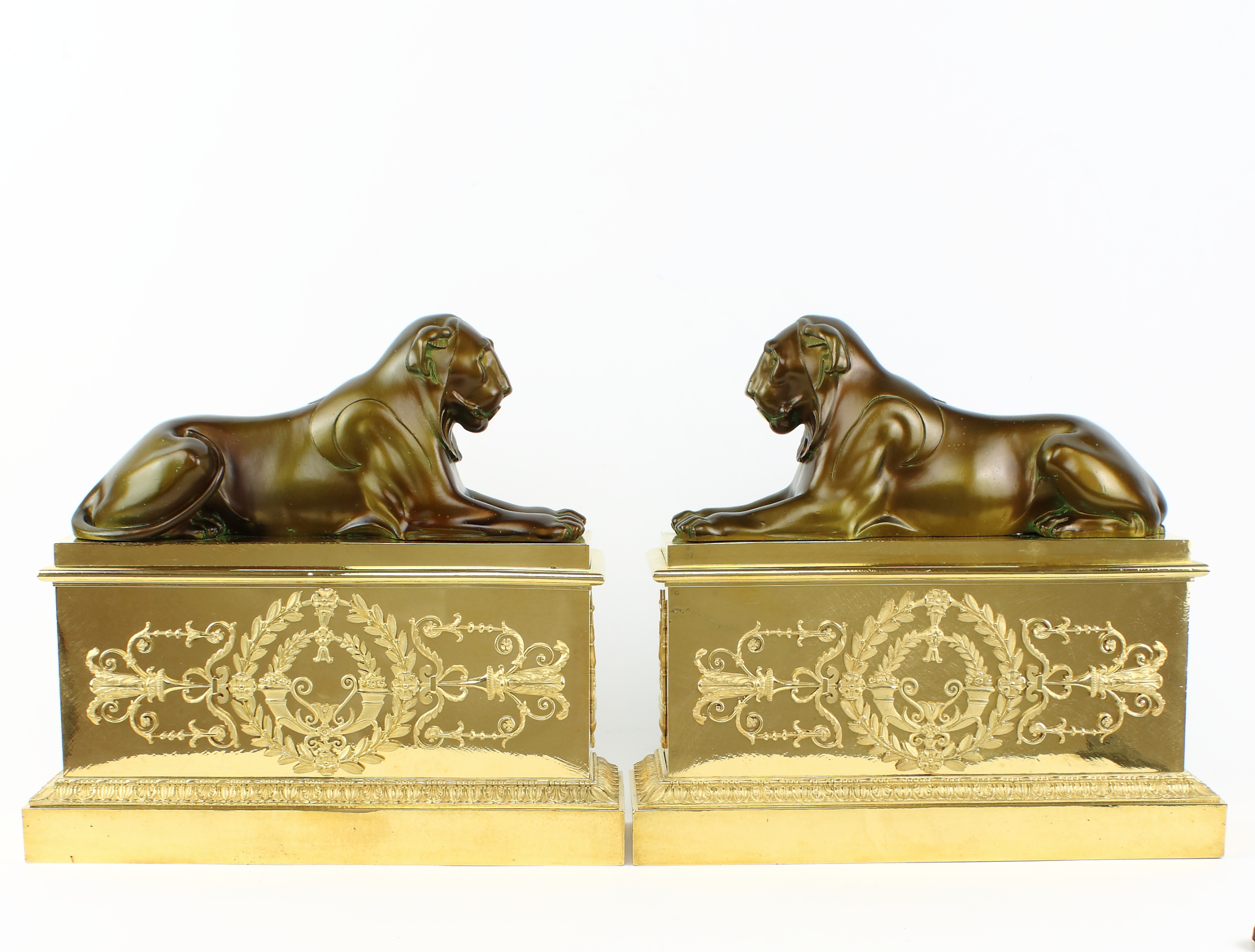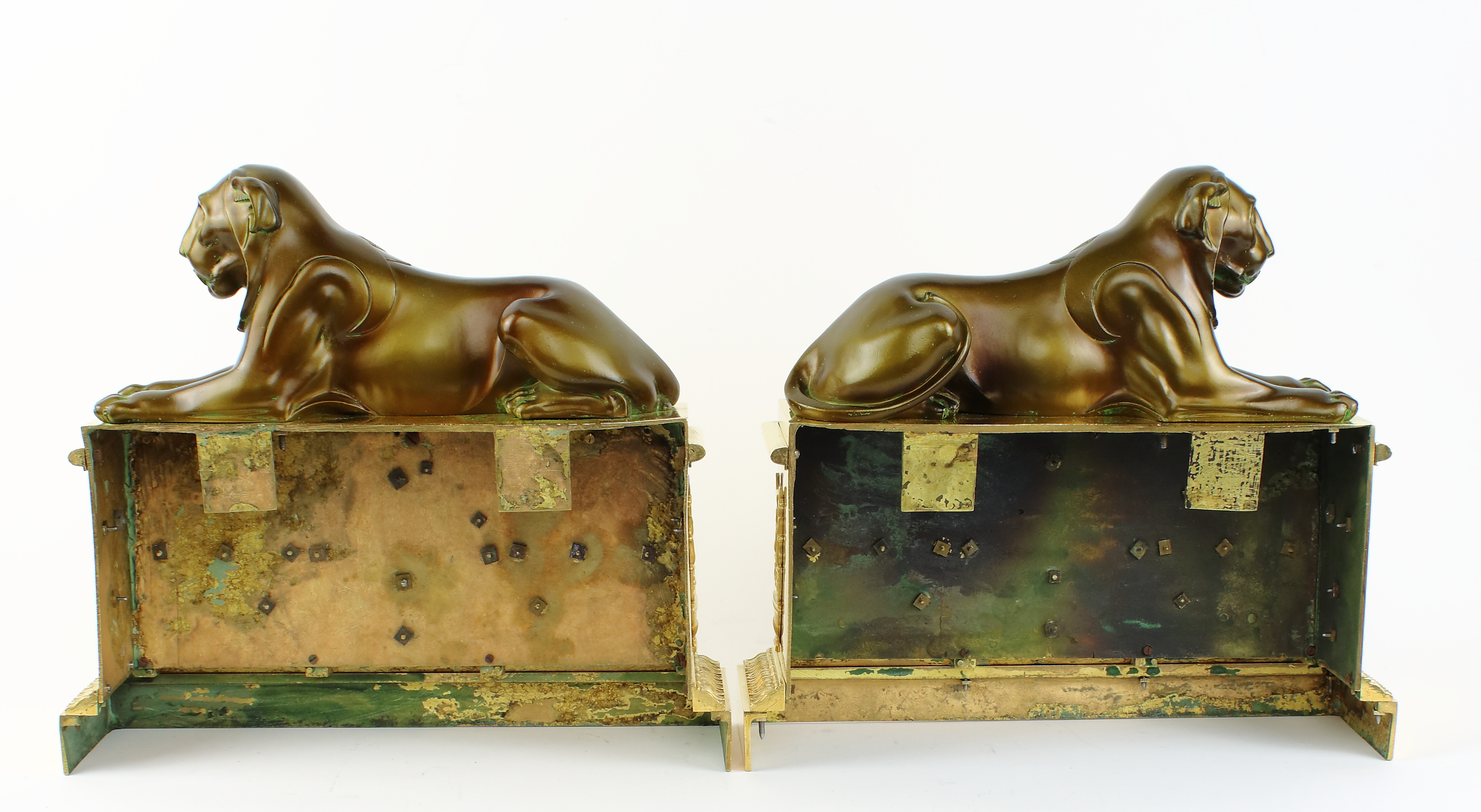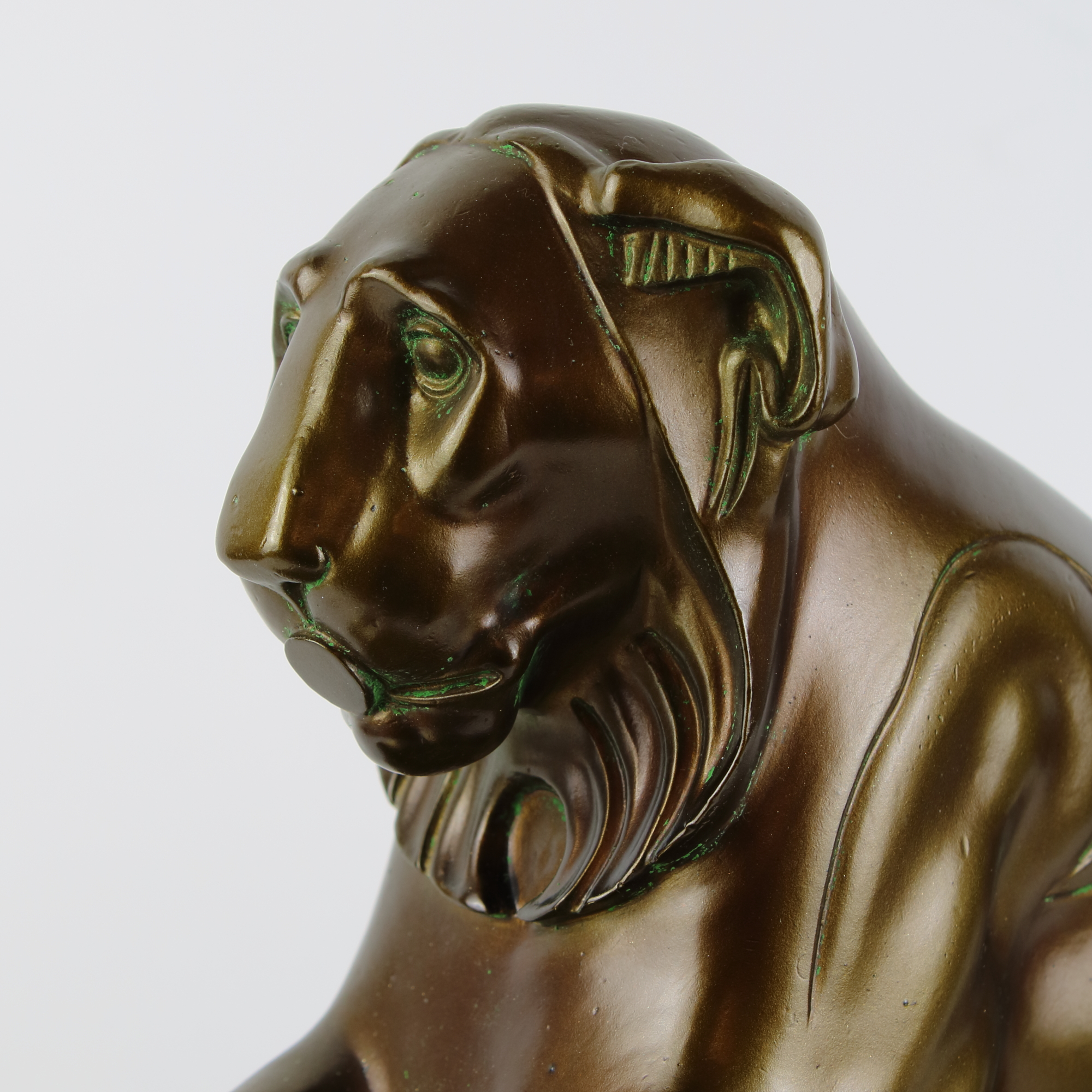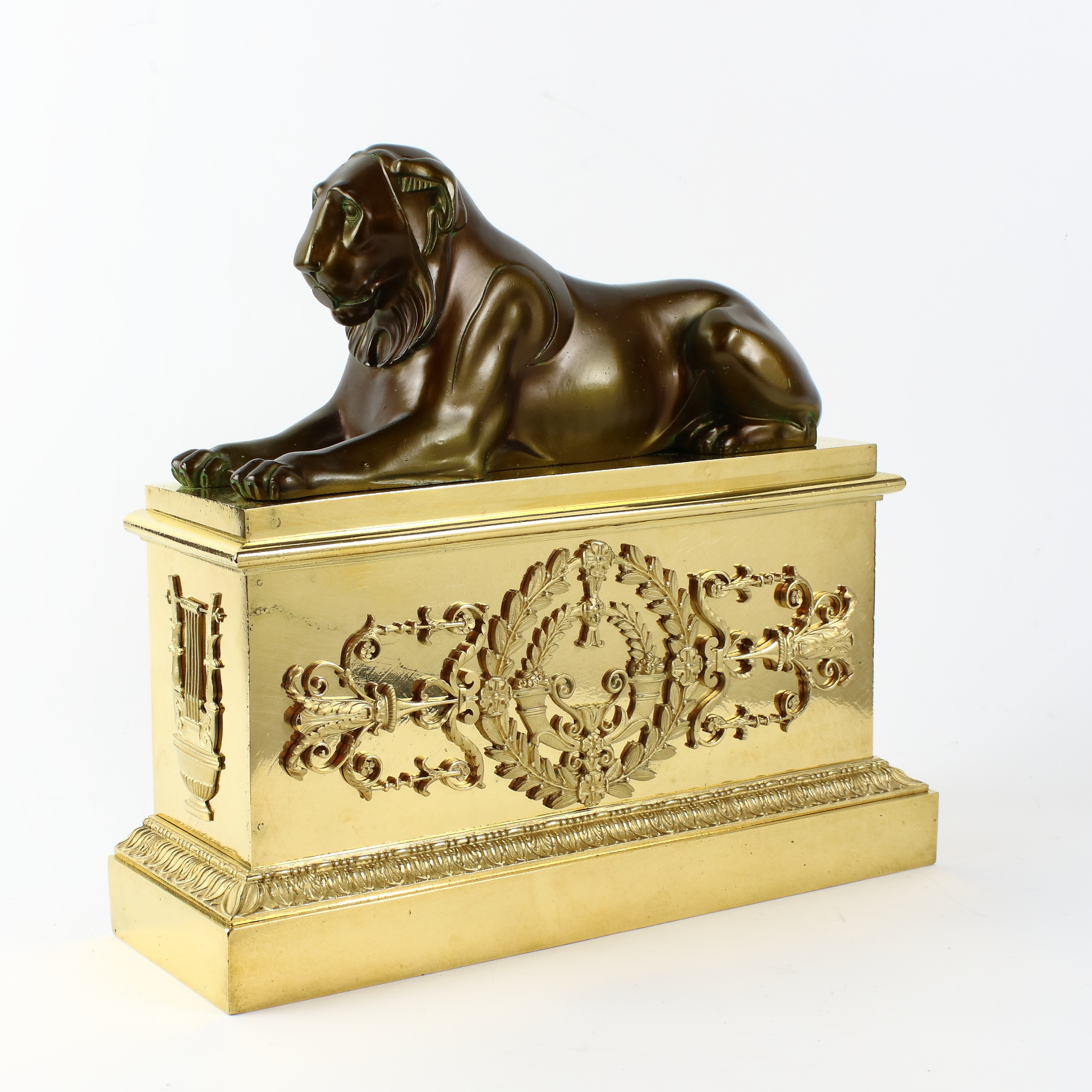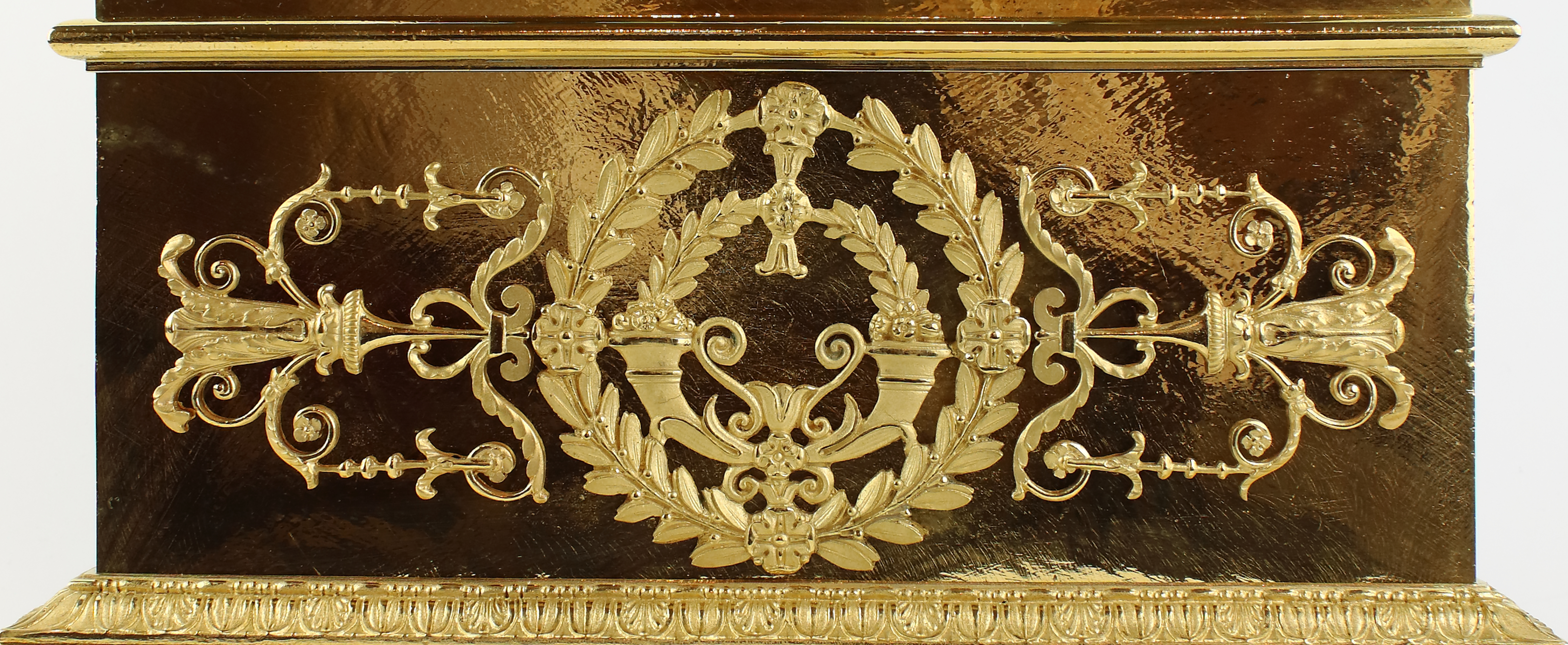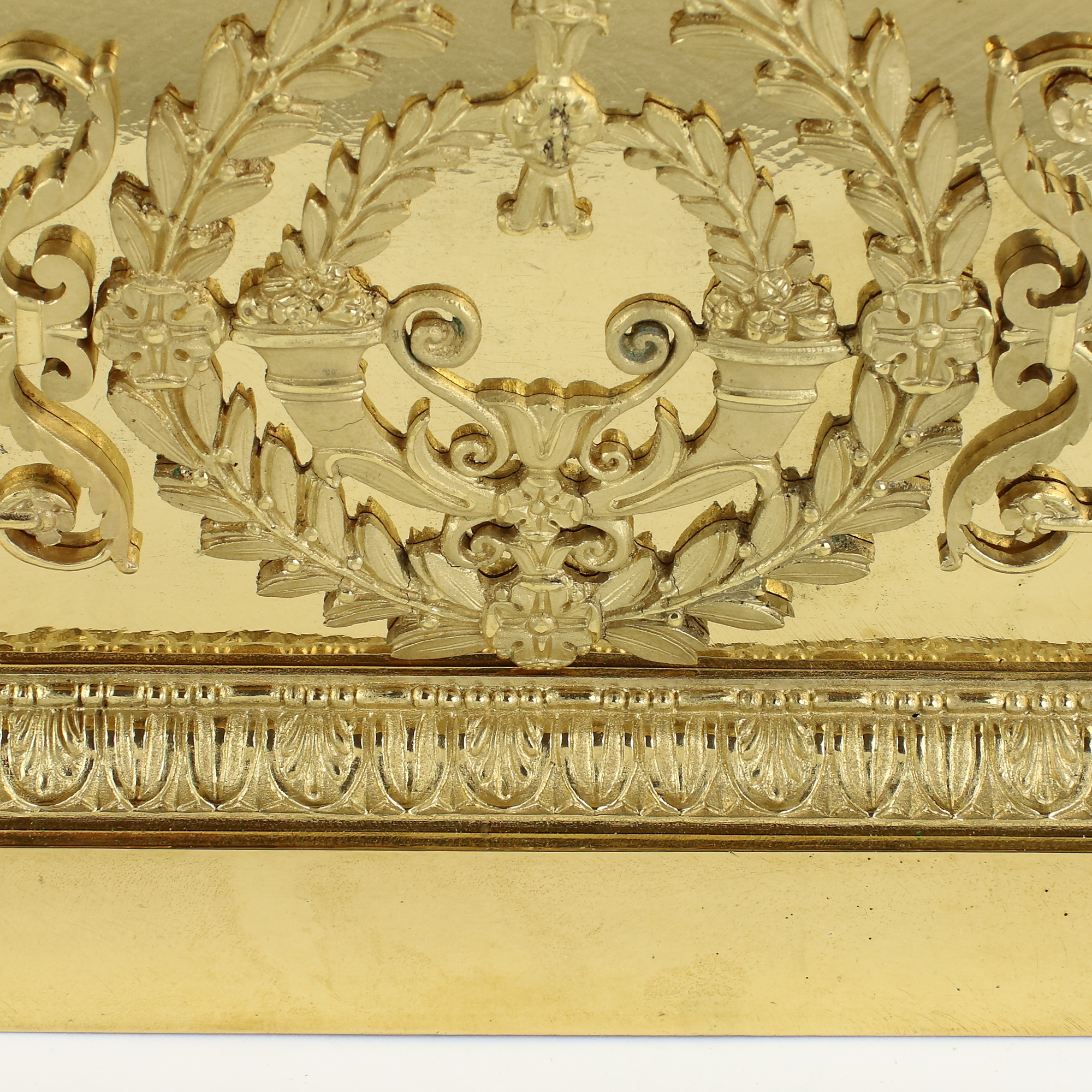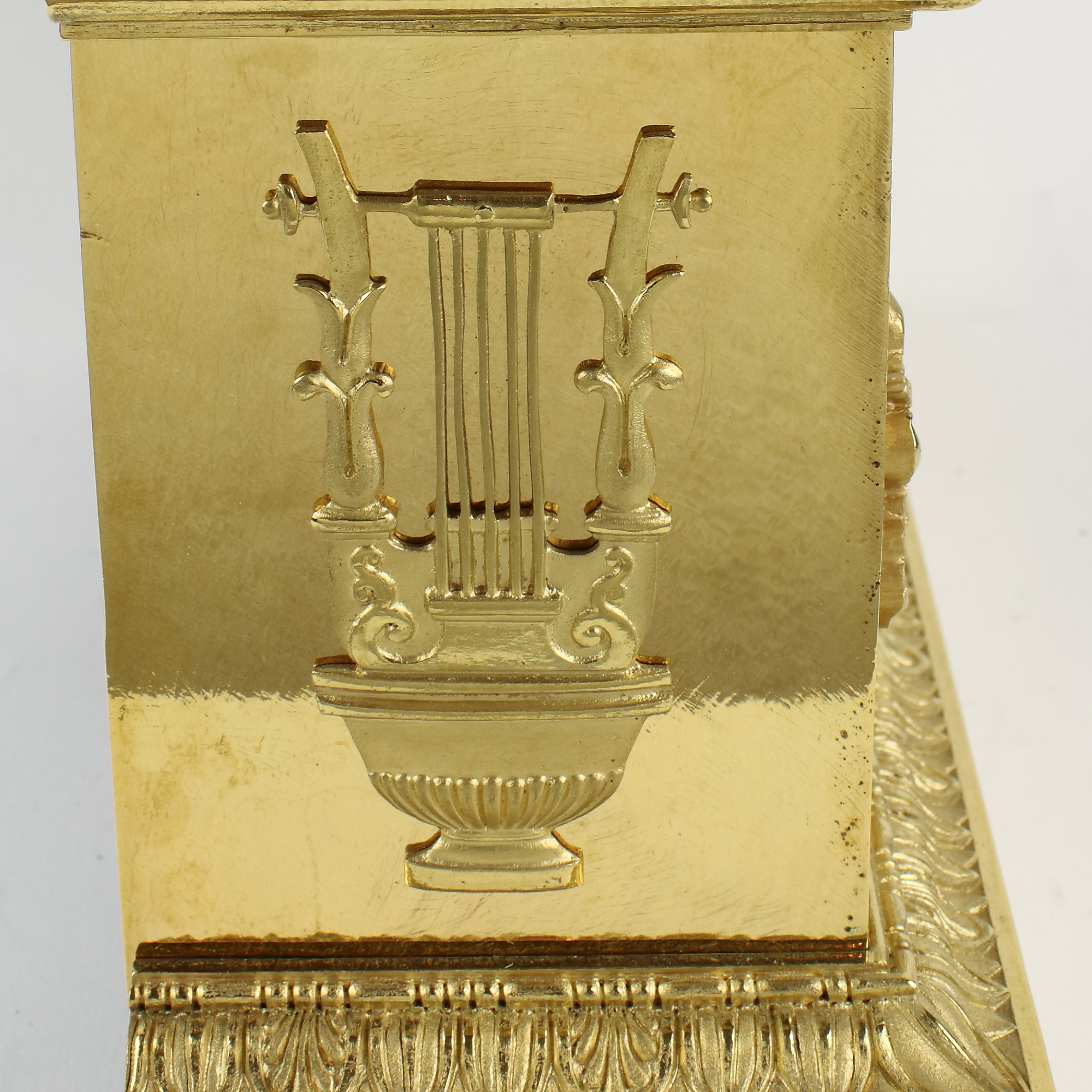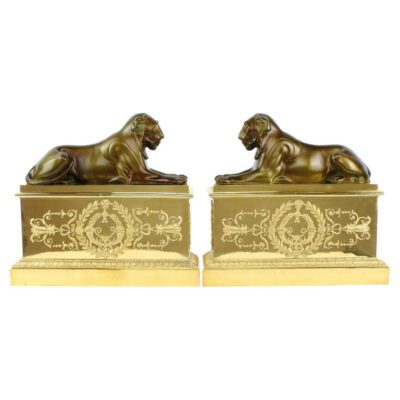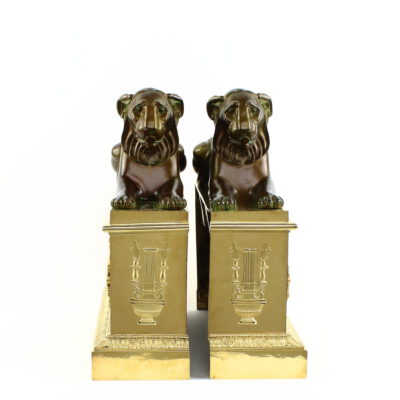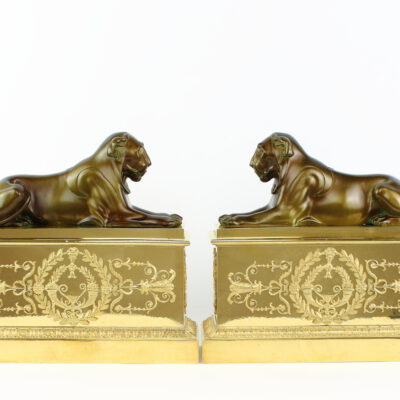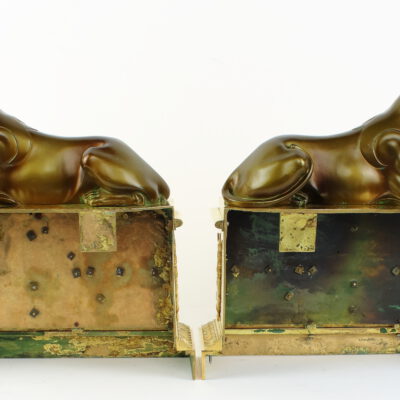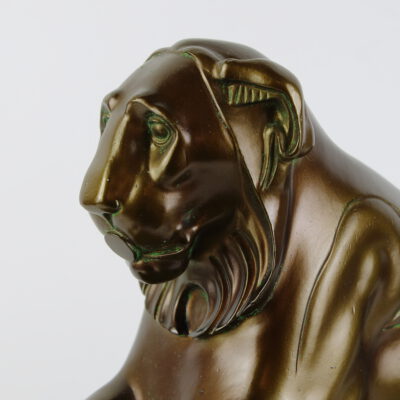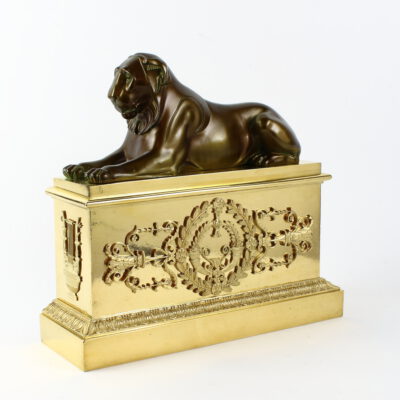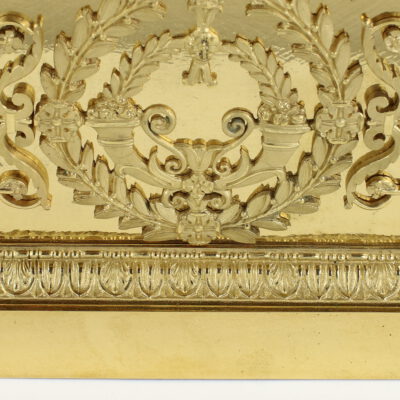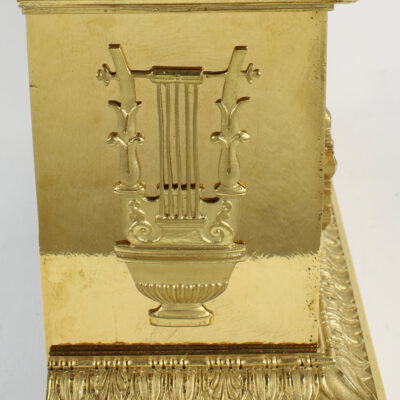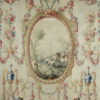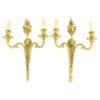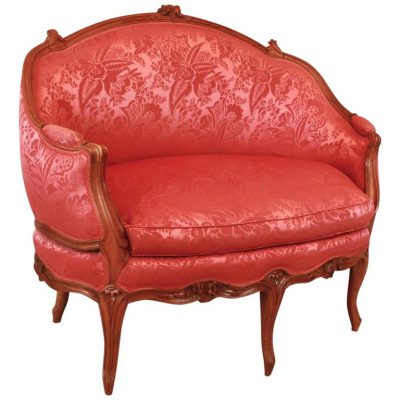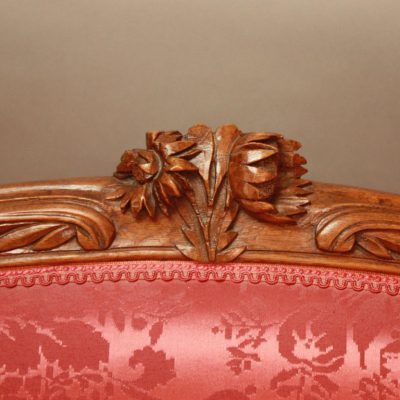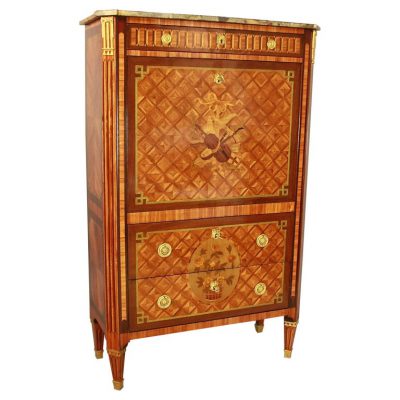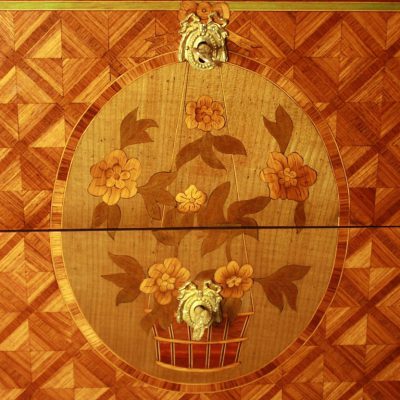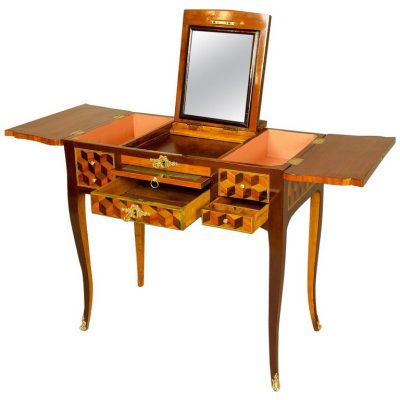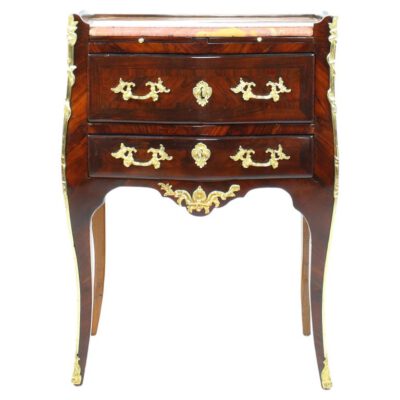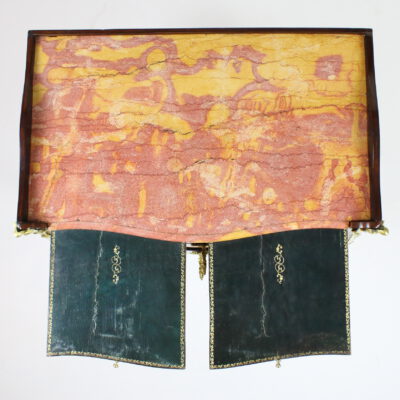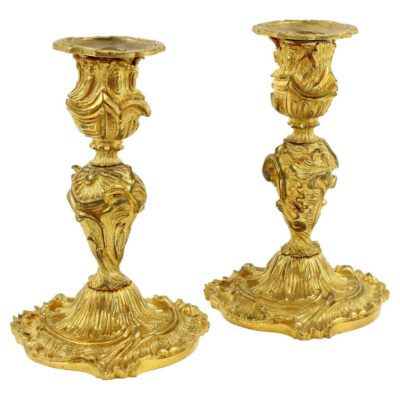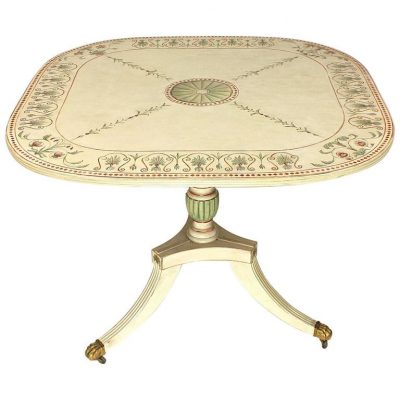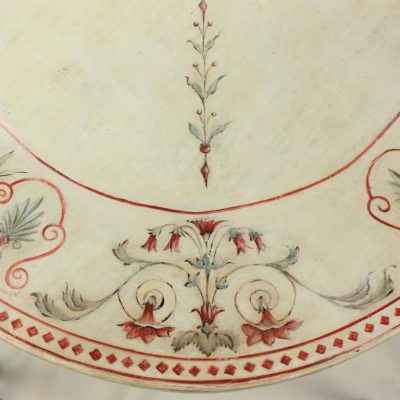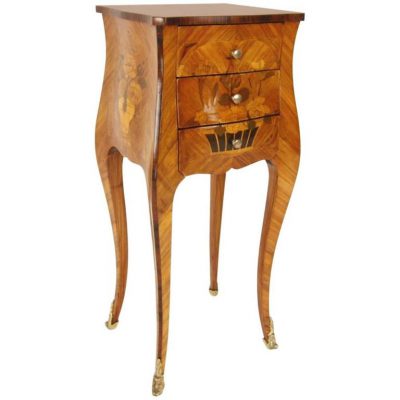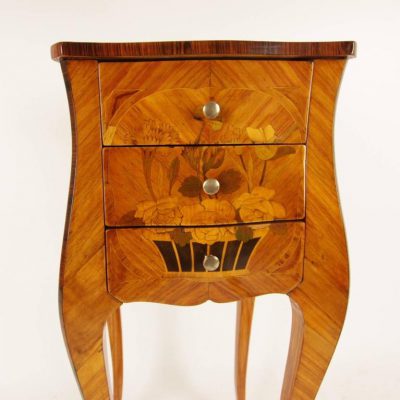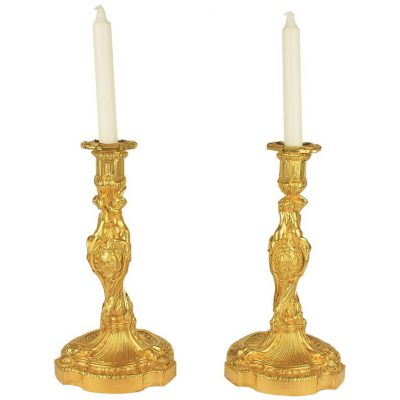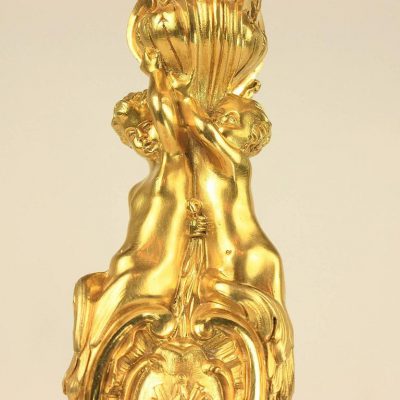Two figures of lionesses facing each other made of patined bronze lying on rectangular gilt-bronze pedestals in the shape of neoclassical column bases, the front being decorated with large Empire style laurel wreath, cornucopiae and arabesque motif gilt-bronze decorative mounts.
The lionesses are inspired by the lioness sculptures in front of the grand staircase of the Capitol in Rome: the staircase called Cordonata was built by Michelangelo in the 16th century by placing the ancient Roman pair of lioness sculptures at the beginning of the stairs. They are said to have already been at the capitol in ancient times, initially being used as gargoyles.
The ancient Roman pair of lionesses was copied numerous times for the decoration of objets d’art during the French Empire period: the offered chenets are very close toin style, shape and quality to the pair of andirons made by Claude Galle for the Grand Trianon at Versailles before 1805. Another example of an andiron being topped by a similar lioness figure was made by Antoine-André Ravrio. Claude Galle (1758-1815), maître in 1786, nearly immediately gained many commissions from the Garde-Meuble de la Couronne and then enjoyed significant patronage under Emperor Napoleon. He is known to have collaborated with Pierre-Philippe Thomire (1751-1843) and was responsible for the majority of bronzes d’ameublement supplied during the Empire to Château de Fontainebleau and other palaces. The world’s finest collections exhibiting his work, i.e. Musée National de Château de Malmaison, the Musée Marmottan in Paris, the Museo de Reloges at Jerez de la Frontera, the Residenz Munich and the Victoria and Albert Museum in London.
Compare: Ottomeyer/Pröschel: Vergoldete Bronzen, 2 vol. Munich, 1986, vol. 1, p. 340-341, fig. 5.4.1, 5.4.5
Condition: very good, min. wear consistent with age and use, gilding refinished, patina cleaned – detailed condition report on request

